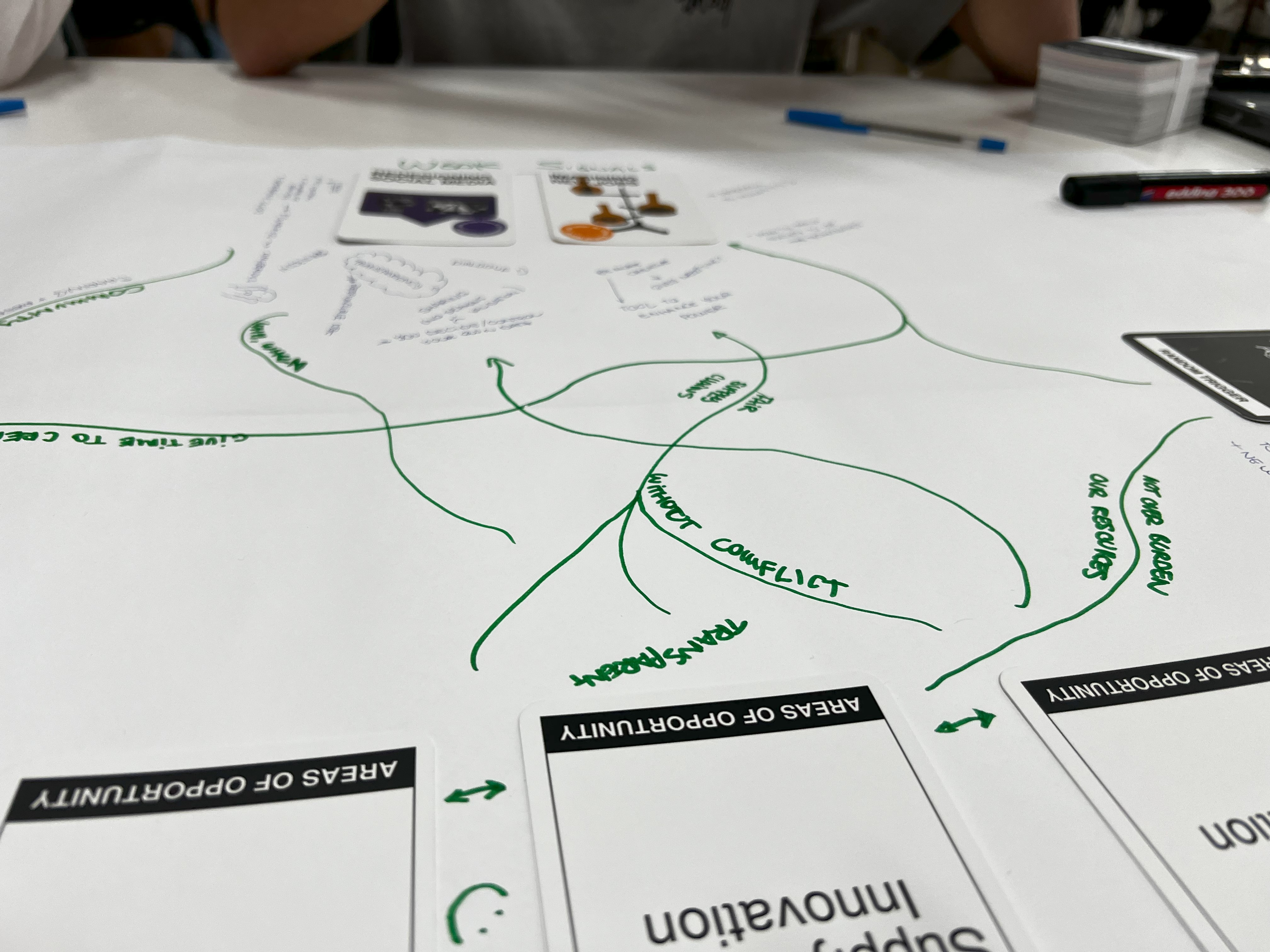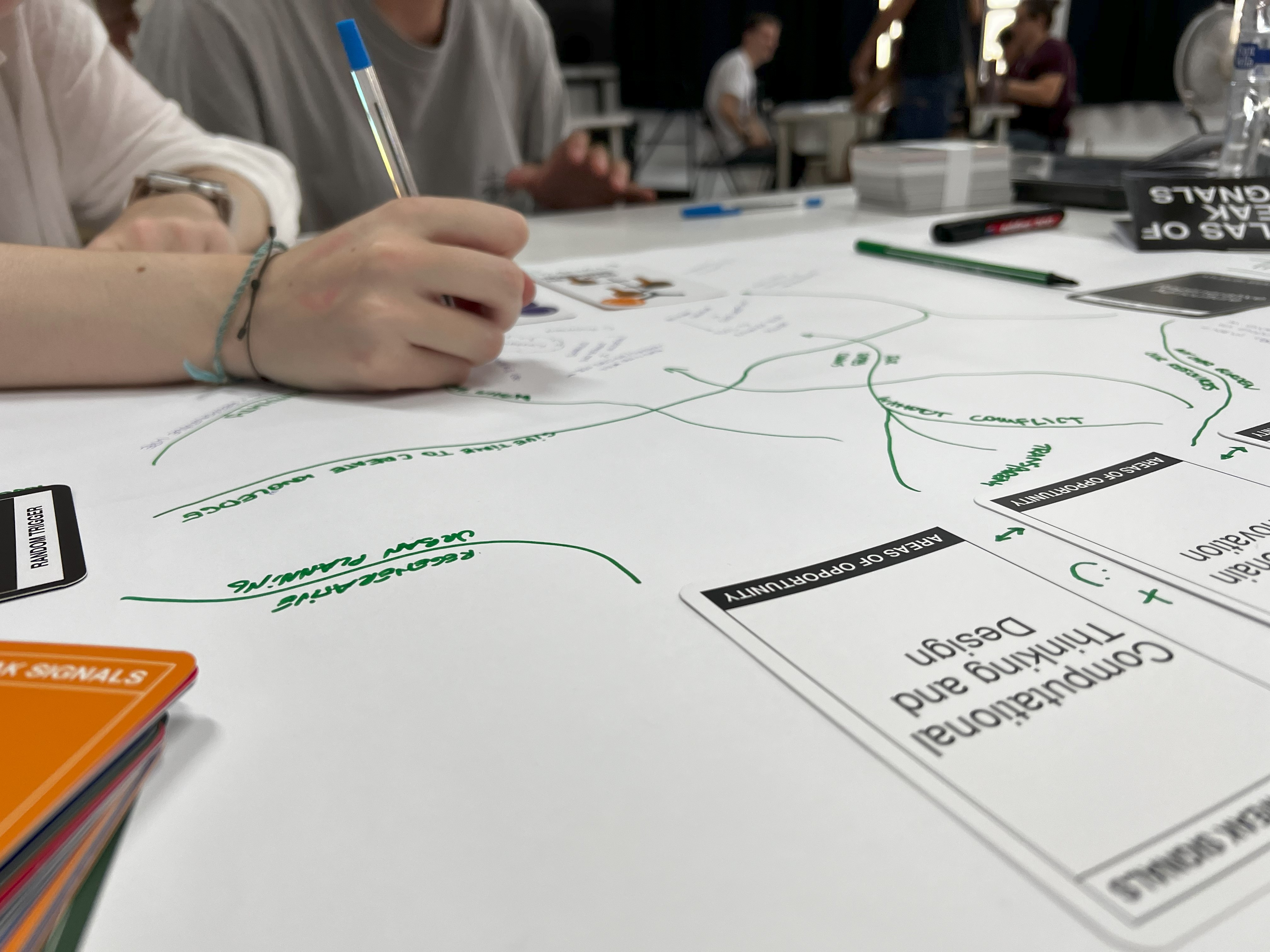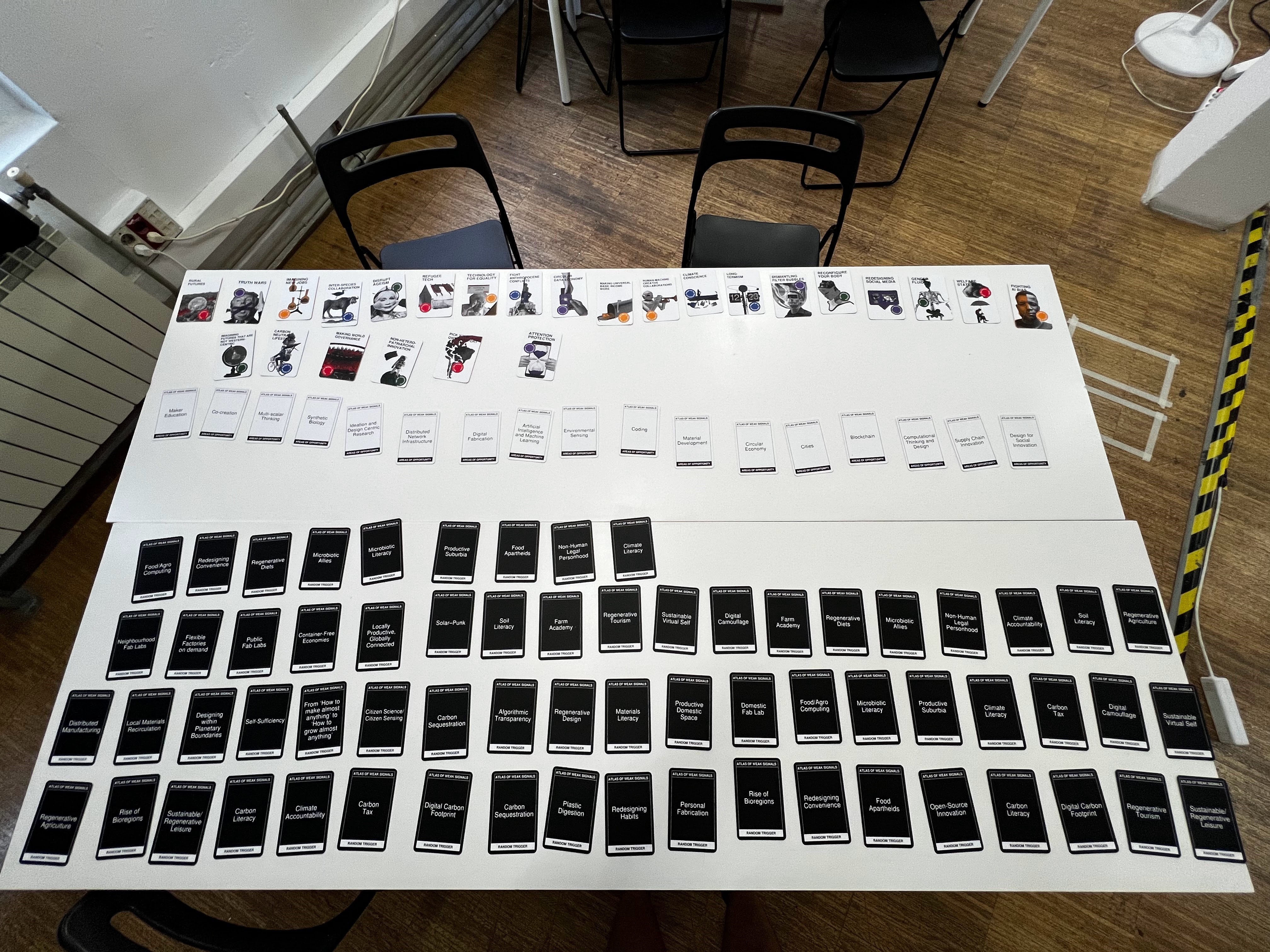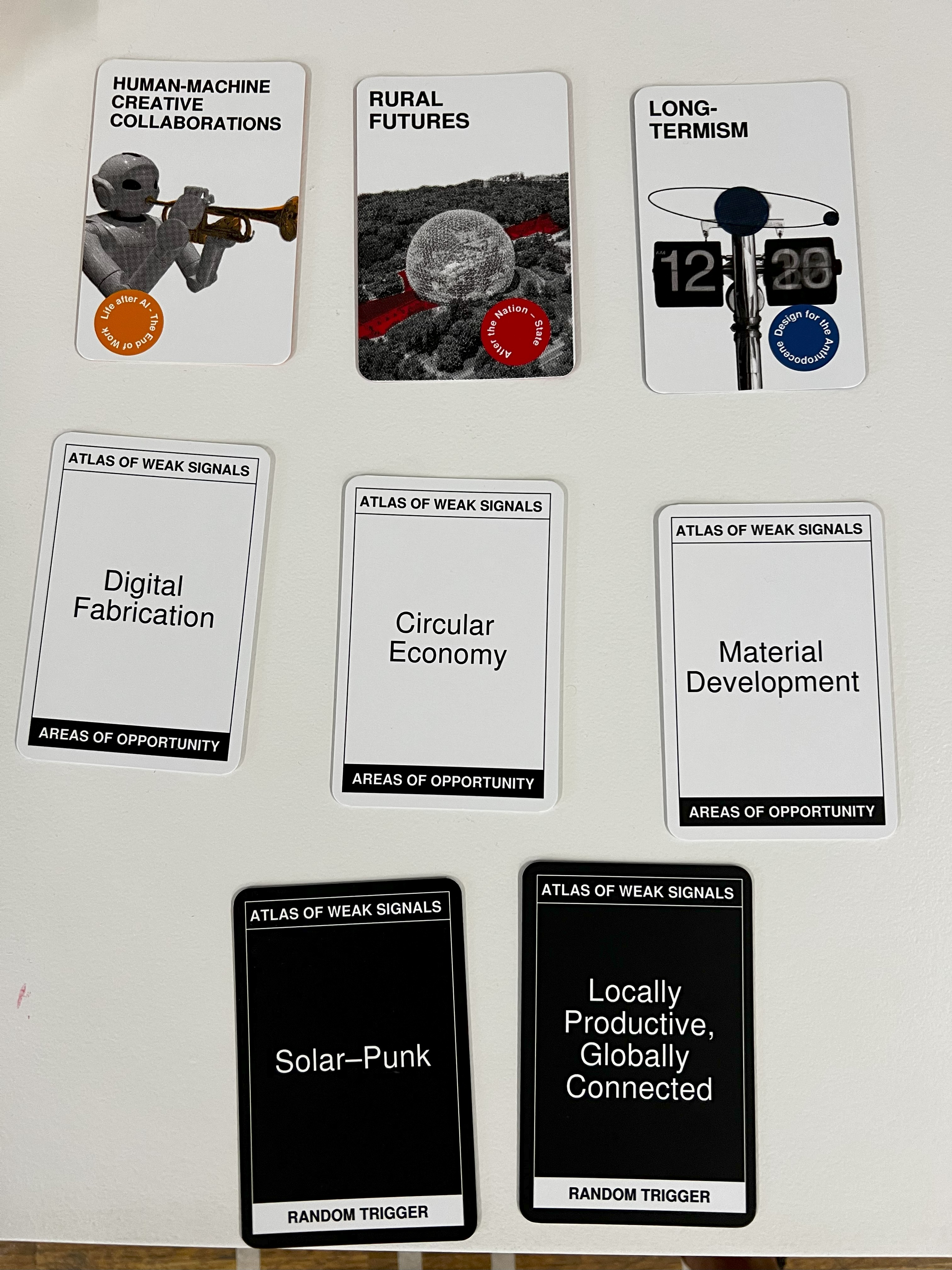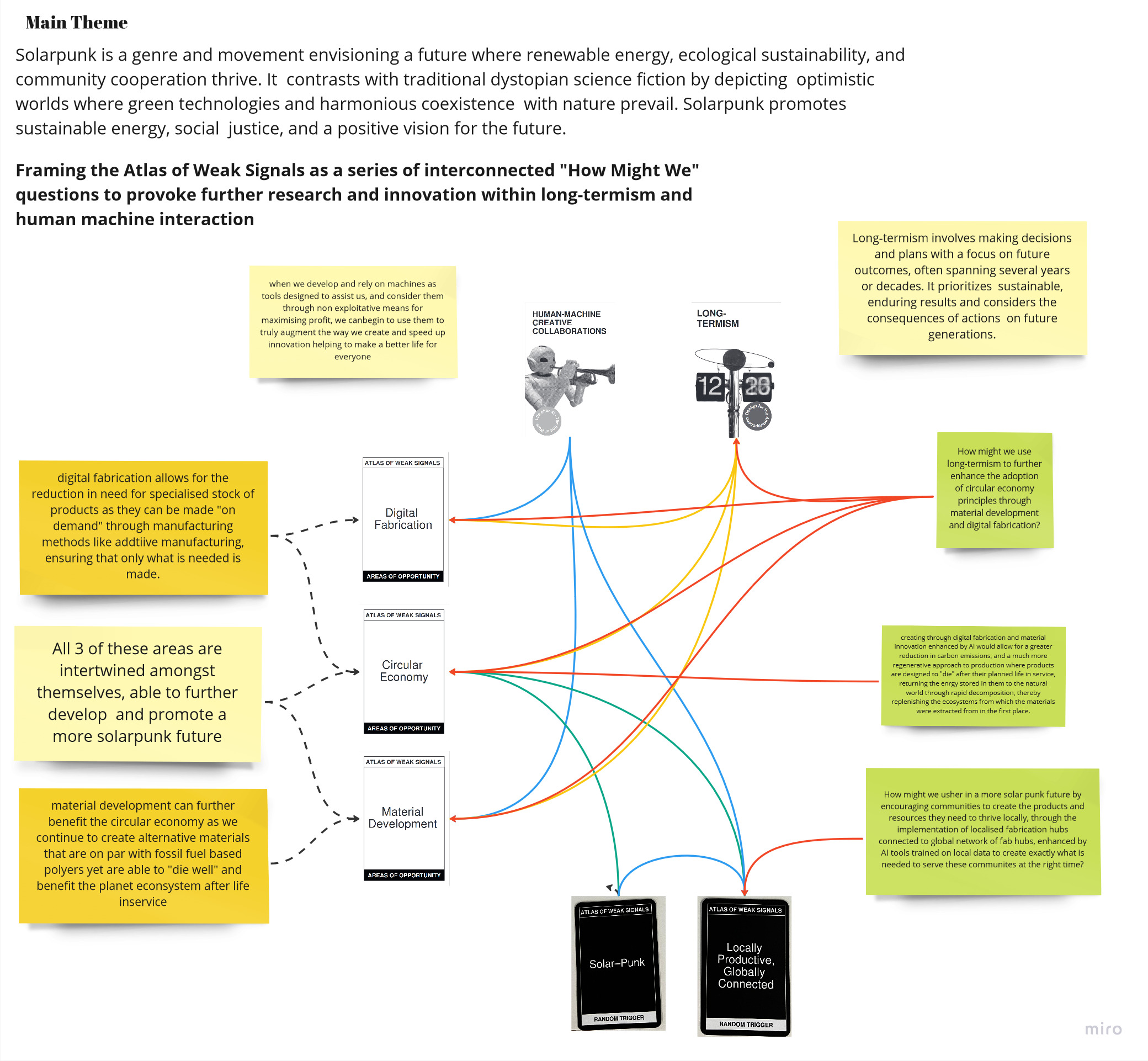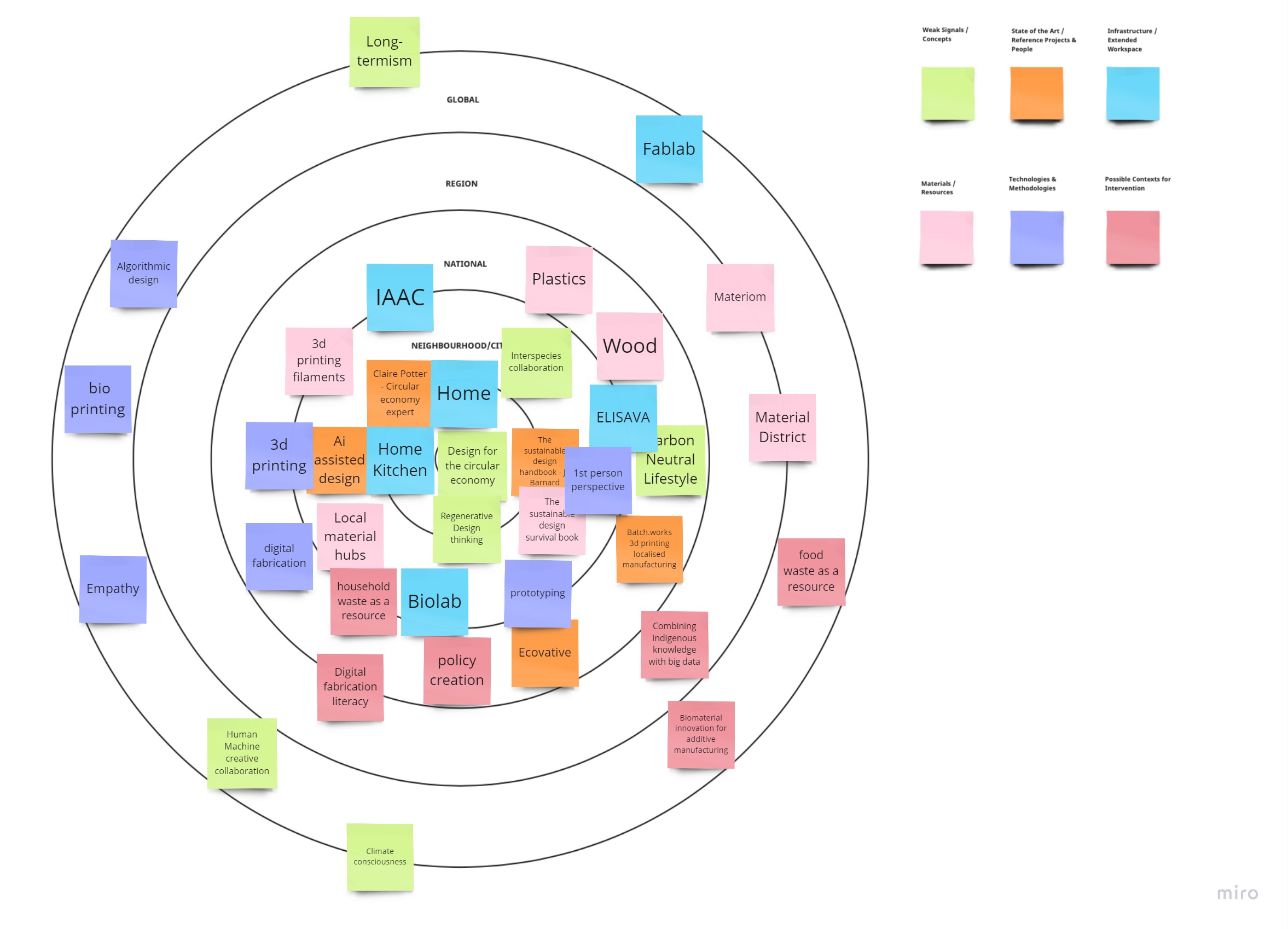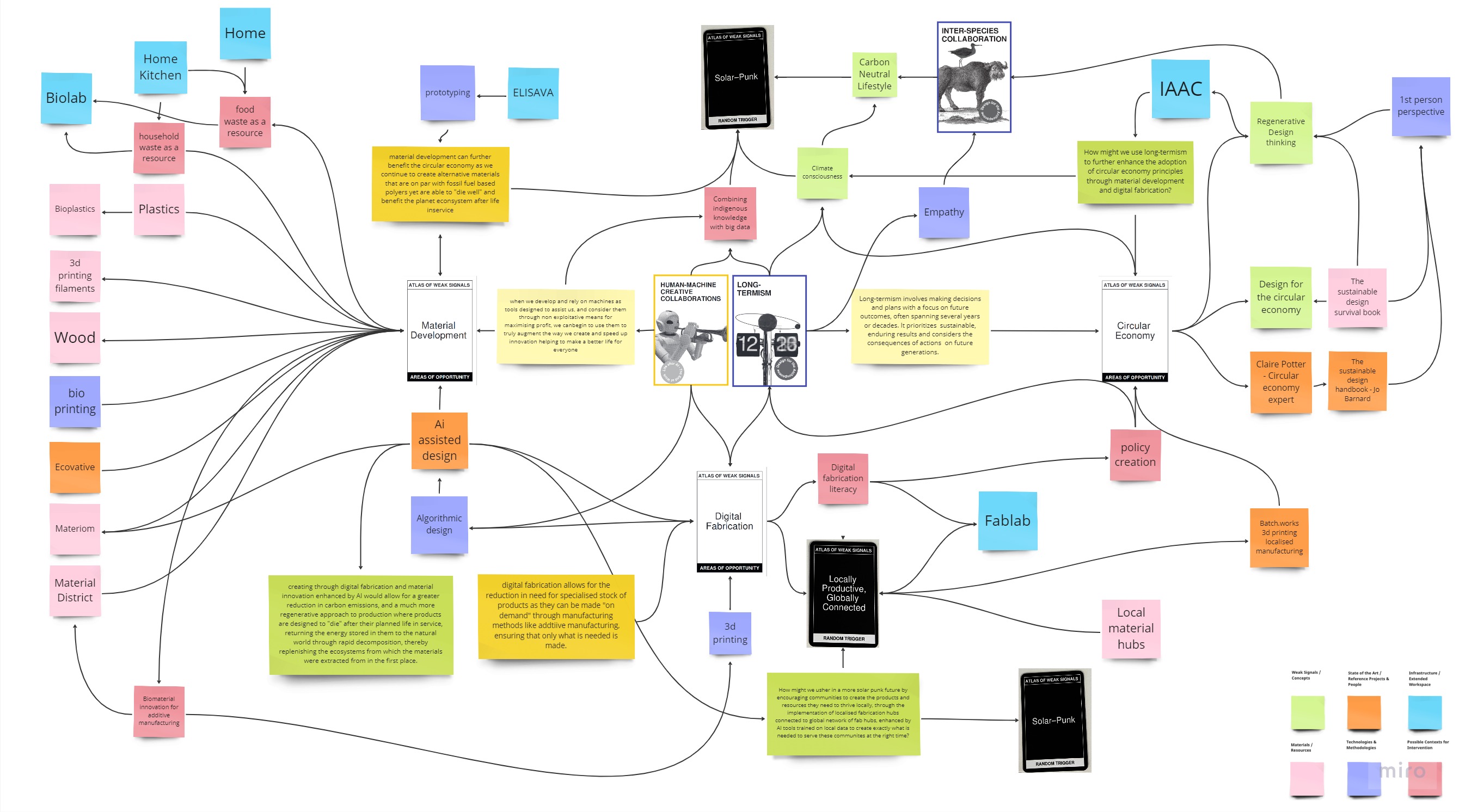Atlas of Weak Signals¶
Too Long Didn’t Read
We explored the concept of Weak Signals—indicators of emerging trends that help anticipate potential futures. Through group work and brainstorming, we identified opportunities within these signals, focusing on solarpunk, local production, global connections, long-termism, and human-machine creative collaborations. We created our own design spaces and multi-scalar diagrams to visualize ideas and connections, which can guide future design interventions. Two new weak signals added were Climate Change Adaptation and Water Conservation.
Decoding the Atlas of Weak Signals¶
We started our journey into creating a design space with an introduction to the concept of Weak Signals. These are areas of potential research or work that have not been fully realized or defined yet. They act as indicators of emerging trends, allowing us to adapt and accommodate for potential futures. I found this concept fascinating as it enables us to identify trends before they become widely recognized and take appropriate action.
We explored how Weak Signals have been used in the past and how they can be used to develop various solutions as these areas become more developed. It was interesting to see the gamified version of the methodology, which involved using a system of cards to explore emergent Weak Signals. With the guidance of Jana and Roger, we delved into these signals and identified areas of opportunity within them that could lead to different solutions.
Later, we broke into smaller groups to focus on specific Weak Signal areas and brainstorm various pathways and solutions. This exercise was guided by random triggers, which helped narrow down our focus and stimulate our thinking. It was exciting to see the diverse ideas and perspectives that emerged from these group discussions.
The toolkit used in this session was amazing. It opened up so many new pathways for out-of-the-box thinking when it comes to developing ideas. While some of the ideas generated may not be great, the point is that it encourages dialogue and collaboration among all participants. On the other hand, if done alone, it promotes introspection and reflection. Working with Weak Signals that I knew nothing about forced me to stop and think, trying to understand their meaning and significance for both myself and society as a whole.
I strongly believe that this type of thinking should be taught at a much earlier level, especially during bachelor’s degrees for those studying design. It encourages us to question the things that have been normalized around us and completely rejuvenates how we think of ideas. It serves as a framework for more effective and out-of-the-box thinking, which is greatly enhanced through collaboration.
We then set about creating our own Atlas of Weak Signals (AoWS) in our design space drawing ideas from the AoWS card deck. This involved designing and collecting ideas, thoughts, and influences that could spark new pathways and connections. It was a challenging exercise at first, but I ended up enjoying it. It felt like creating a Pinterest board on steroids, where I could explore and document various ideas and inspirations in my design space.
My main area of interest lies in the concept of solarpunk, focusing on the combination of local production and global connections. building upon the weak signals of long-termism and human-machine creative collaborations.
Making our own design space with the atlas¶
My main area of interest lies in the concept of solarpunk, focusing on the combination of local production and global connections. building upon the weak signals of long-termism and human-machine creative collaborations. These signals emphasize the importance of considering the impact of our actions on future generations and leveraging the collaborative power of humans and machines. Within this framework, I concentrated on three key areas of opportunity: digital fabrication, circular economy, and material development. These areas, when harnessed effectively, have the potential to pave the way for a solarpunk future.
I concentrated on three key areas of opportunity: digital fabrication, circular economy, and material development. These areas, when harnessed effectively, have the potential to pave the way for a solarpunk future.
By fostering cooperation between humans and machines, we can unlock innovative solutions in biomaterials, circular economies, and doughnut economic models. This collaboration ensures that the goals of long-termism are maintained, with a focus on creating products and policies that account for the well-being of future generations. Through localized digital fabrication hubs, we can harness the unique capabilities of both humans and machines, pushing the boundaries of innovation. This approach not only aligns with the solarpunk ethos but also contributes to the vision of a sustainable future framed by localized production, global connectivity, and a deep commitment to the well-being of all generations to come.
2 new weak signals for the Atlas:¶
Going further, we had to add 2 new suggestions for the card deck, I decided to focus on two new potential weak signal areas, and landed on water conservation and climate adaptation as areas that could be designed for.
1. Climate Change Adaptation¶
Climate change-related events, such as extreme weather conditions and natural disasters, pose significant risks to supply chains. Strategies for adapting to these challenges are becoming crucial weak signal areas.
2. Water Conservation¶
Emerging technologies for water conservation, such as advanced filtration systems and smart irrigation techniques, signal a growing focus on preserving water resources, especially in water-scarce regions.
We shared and evaluated our atlases with each other in groups to help in drawing connections between ourselves and each other. It was really interesting to see the thought process behind everyone else’s atlases and how they drew their connections and conclusions, even better was being able to discuss amongst ourselves and form new connections between each other as we discussed and shared ideas.
Multi-scalar design diagrams:¶
We then began the next exercise, creating multiscalar design diagrams. These take a weak signal and scale it up from the personal to the global scale through interesting thought triggers, connections, resources, frameworks and contexts for interventions, in an ever expanding series of rings. I focused on the weak signals I’d chosen before, Long-Termism and Human Machine creative interactions.
This is something that I struggled with in the beginning as I have never had to frame my thought process this way and I found it difficult in the beginning to draw connections between the different options and ideas, where to place them and how to draw connections between them, I drew a deeper understanding of creating the atlas of weak signals as a mindmap, which for me created a much easier way to visualise connections and ideas as the stages scaled up from the individual to the global.
Personal Design Space:¶
Finally, we ended with creating the finalised personal design space, a combination of the early atlas of weak signals design space we had created and multiscalar design diagram, allowing for connections to be drawn between various abstract ideas, concepts or resources that can help to potentially create a series of solutions to the weak signal areas we found interesting right now and maybe formed potential areas we’d like to work on in the future.
My design space ended up looking like a sprawling mind map, with sticky notes and arrows connecting everything in ways that I think could be useful in the future. I included a few “how Might We” questions that framed some of the areas I wanted to explore and tried to connect those to some of the resources, toolkits, methodologies and infrastructure I have access to right now so that I could track the stepping stones I can follow as I explore some potential areas for design interventions that could have some impact in trying to create the solarpunk future I’d like to see in the future.
I found doing this exercise much easier than the multiscalar design diagram, as I struggled in the beginning to try and visualise how to distribute the different areas of interest to me, but with this I was able to visualise connections and draw links much easier between different areas that on their own appeared far more abstract. These connections, in the form of a mind map that can seem a little chaotic, helped me to see links that I couldn’t see before, sprawling outwards from some central ideas and that let me work backwards from abstract macro scale concepts like long-termism down to something more concrete that I can research and work towards like creating new forms of bio-materials for additive manufacturing.
I much prefer creating these sorts of diagrams and working from them as they let me keep track of lots of various ideas together in one that I can then draw connections with in a visual way, rather than keeping different ideas in separate lists. I think this was the point of the exercise and creating these spaces, to create a visual idea board that you can take a step back from and see the bigger picture without losing sight of what can be done right now. I think this is going to become a very useful tool for me in the future.
this was the point of the exercise and creating these spaces, to create a visual idea board that you can take a step back from and see the bigger picture without losing sight of what can be done right now.

